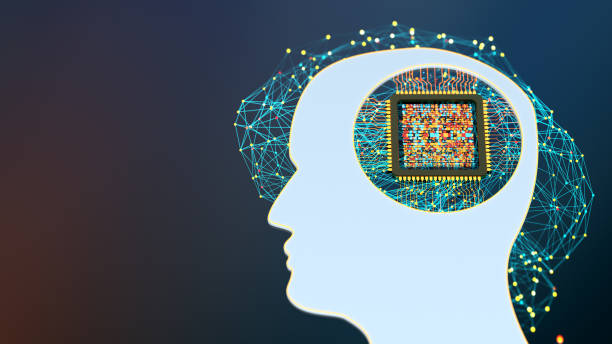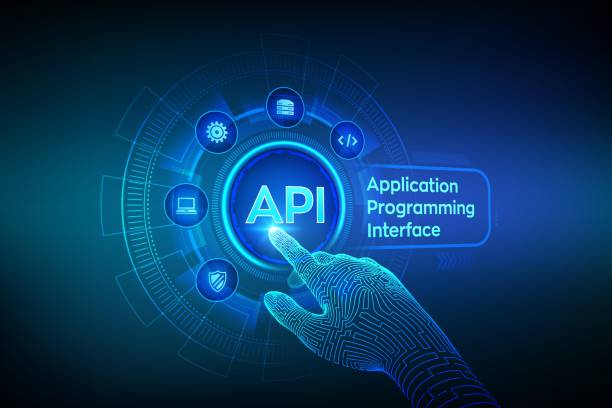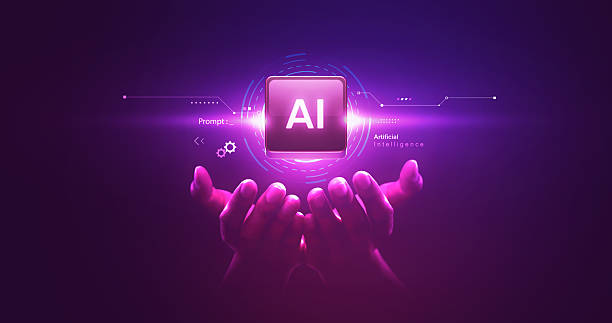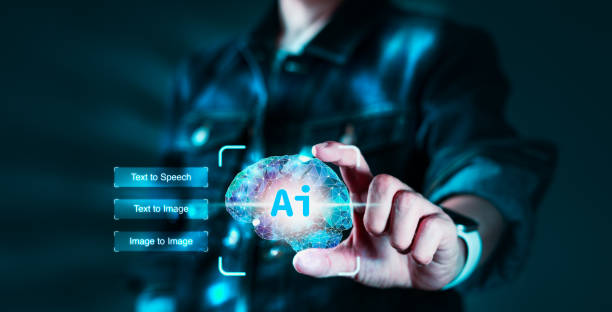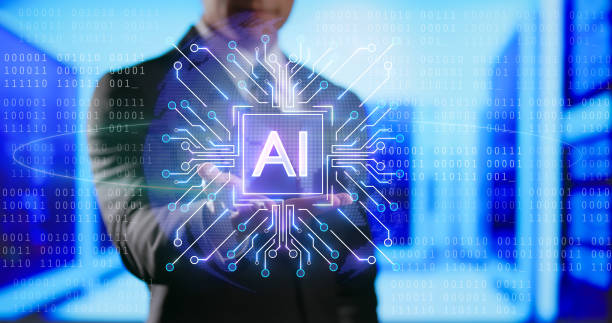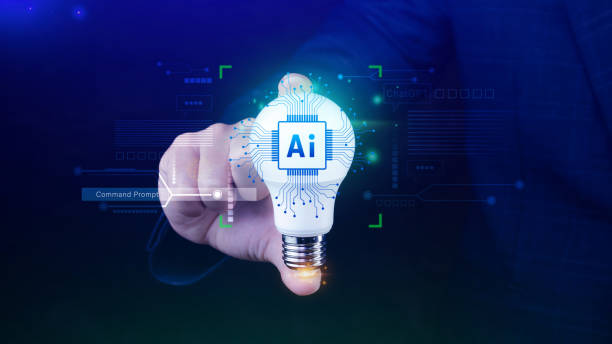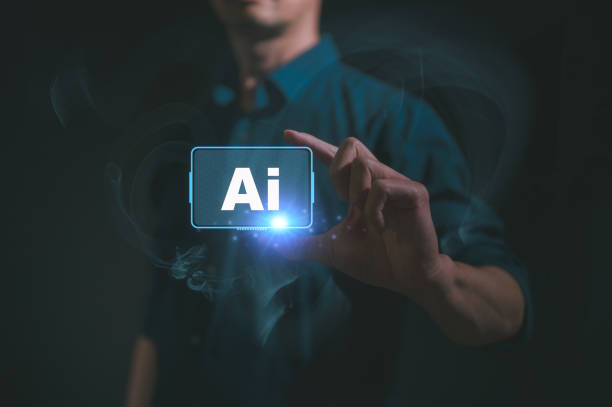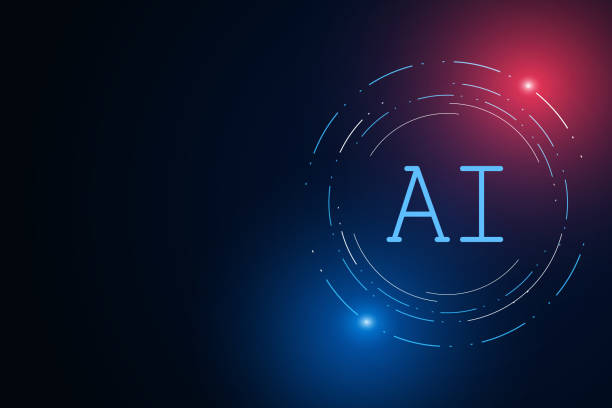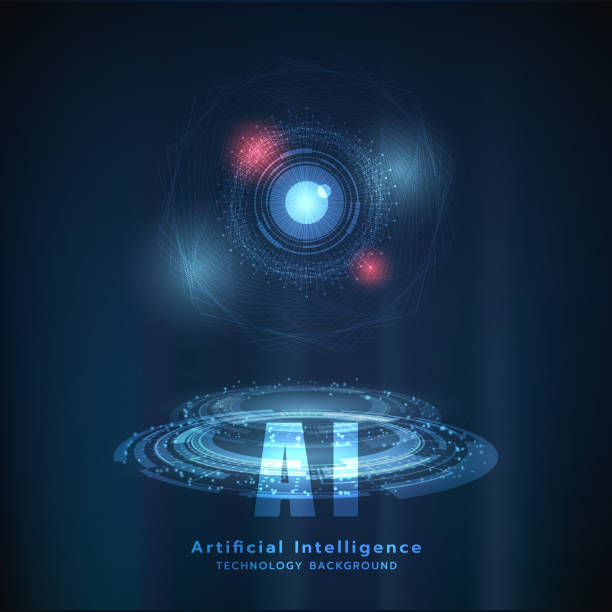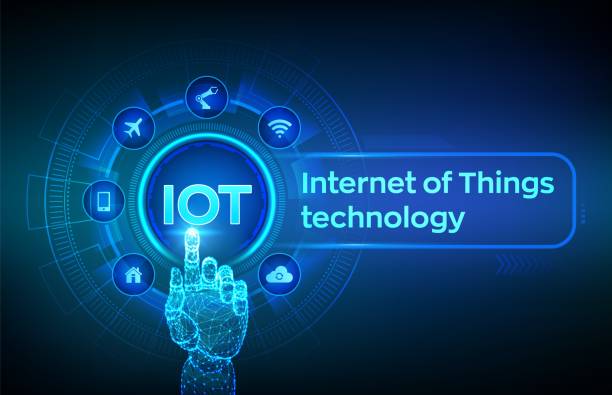### What is an Artificial Intelligence Robot: Definition, History, and Applications
“`html
#Artificial_Intelligence_Robot or #AI_Robot is a combination of two distinct fields: #Artificial_Intelligence and #Robotics.
In short, artificial intelligence allows machines to think, learn, and solve problems, while robotics deals with the design, construction, operation, and application of robots.
The integration of these two fields creates robots that are capable of performing complex tasks, making independent decisions, and interacting with their environment in an intelligent manner.
The history of artificial intelligence robots dates back to the past decades, when researchers began to explore the possibility of combining artificial intelligence and robotics.
The first artificial intelligence robots were mainly designed to perform simple and repetitive tasks, but with the advancement of technology, these robots are able to perform more complex tasks and interact with their environment in a more natural way.
Today, artificial intelligence robots are used in a wide range of industries and applications, including manufacturing, healthcare, logistics, customer service and even entertainment.
These robots can help improve productivity, reduce costs, increase safety and provide better services to customers.
For example, in the manufacturing industry, artificial intelligence robots can be used to perform tasks such as assembly, quality inspection and packaging.
In healthcare, these robots can help doctors diagnose diseases, perform surgeries, and provide remote medical care.
In logistics, artificial intelligence robots can be used to manage warehouses, deliver goods, and optimize routes.
Tired of losing customers due to poor e-commerce website design? Solve this problem forever with Rasaweb!
✅ Increase sales and visitor-to-customer conversion rate
✅ Smooth and attractive user experience for your customers⚡ Get free consultation
Main Components of an Artificial Intelligence Robot: From Sensor to Software
An artificial intelligence robot consists of several main components that work together to enable intelligent tasks.
These components include:
- Hardware: Includes the physical body of the robot, motors, gearboxes, sensors, and processors.
The robot’s hardware should be designed in such a way that it can perform the desired tasks effectively and efficiently. - Sensors: Collect information about the surrounding environment.
There are different types of sensors, including vision sensors, audio sensors, tactile sensors, and temperature sensors. - Processors: Process the information collected by the sensors and make decisions based on it.
Processors typically use artificial intelligence algorithms to perform these tasks. - Software: Includes artificial intelligence algorithms, control programs, and user interfaces.
The robot’s software should be designed in such a way that it can communicate with the robot’s hardware and its surrounding environment.
Click here to preview your posts with PRO themes ››
The interaction of these components is as follows: sensors receive information from the environment, then this information is sent to the processor.
The processor analyzes this information using artificial intelligence algorithms and makes decisions.
These decisions are sent to the motors and other hardware components so that the robot can act appropriately.
For example, an autonomous vehicle uses various sensors such as cameras, lidar, and radar to gather information about its surroundings.
This information is processed by the vehicle’s processor, and decisions are made about how to drive, such as speed, direction, and braking.
These decisions are sent to the vehicle’s engines and braking systems so that the vehicle can drive safely and efficiently.
Types of Artificial Intelligence Robots and Their Applications in Various Industries
Artificial intelligence robots come in various types, each designed for specific applications.
Some common types of artificial intelligence robots include:
- Industrial robots: Used to perform repetitive and dangerous tasks in industrial environments.
- Service robots: Used to provide services to customers in various environments, such as hospitals, hotels, and stores.
- Medical robots: Used to assist doctors in diagnosing diseases, performing surgeries, and providing remote medical care.
- Military robots: Used to perform dangerous and complex tasks on the battlefield.
- Space robots: Used to explore space and conduct scientific research.
The applications of artificial intelligence robots in various industries are very broad.
In the manufacturing industry, artificial intelligence robots can be used to perform tasks such as assembly, quality inspection and packaging.
In healthcare, these robots can help doctors diagnose diseases, perform surgeries, and provide remote medical care.
In logistics, artificial intelligence robots can be used to manage warehouses, deliver goods, and optimize routes.
Even in agriculture, artificial intelligence robots can be used to plant, maintain and harvest agricultural products.
Click here to preview your posts with PRO themes ››
Here is a comparison table of the application of artificial intelligence robots in various industries:
| Industry | Application of AI Robot | Advantages |
|---|---|---|
| Manufacturing | Assembly, Quality Inspection, Packaging | Increased Productivity, Reduced Costs, Increased Safety |
| Healthcare | Disease Diagnosis, Surgery, Remote Care | Improved Accuracy, Reduced Risk, Increased Access to Care |
| Logistics | Warehouse Management, Goods Delivery, Route Optimization | Reduced Costs, Increased Speed, Improved Accuracy |
| Agriculture | Planting, Maintaining, Harvesting Products | Increased Productivity, Reduced Costs, Reduced Resource Use |
Artificial Intelligence Algorithms Used in Robots: Machine Learning and Neural Networks
Artificial intelligence robots use various algorithms to perform their tasks.
Two common types of artificial intelligence algorithms used in robots are:
- Machine Learning: Allows robots to learn from data and improve their performance.
There are different types of machine learning algorithms, including supervised learning, unsupervised learning, and reinforcement learning. - Neural Networks: Models that are inspired by the structure of the human brain.
Neural networks can be used to perform complex tasks such as image recognition, speech recognition, and language translation.
How robots learn using machine learning is that first a large set of data is given to the robot.
Then, the robot identifies patterns in this data using machine learning algorithms.
Finally, the robot can use these patterns to predict new outcomes or make decisions.
For example, an image recognition robot can learn to recognize different images using machine learning algorithms.
To do this, a large set of images is first given to the robot, each of which is labeled (for example, “cat” or “dog”).
Then, the robot identifies patterns in these images that are associated with each label using machine learning algorithms.
Finally, the robot can use these patterns to recognize new images.
The use of neural networks in artificial intelligence robots is because these networks can perform complex tasks with high accuracy.
For example, a self-driving car can use neural networks to recognize traffic signs, identify pedestrians, and predict the behavior of other vehicles.
Disappointed with the low conversion rate of your online store? Rasaweb turns your online store into a powerful tool for attracting and converting customers!
✅ Significant increase in visitor-to-buyer conversion rate
✅ Unparalleled user experience to increase customer satisfaction and loyalty⚡ Get a free consultation from Rasaweb!
Challenges and Limitations of Artificial Intelligence Robots: Obstacles to Development
Despite significant advances in the field of artificial intelligence robots, there are still challenges and limitations that need to be addressed.
Some of these challenges include:
- Cost: Artificial intelligence robots are usually expensive, and this can be a barrier to their widespread adoption.
- Complexity: Artificial intelligence robots are complex and require high expertise to design, build and maintain.
- Safety: Artificial intelligence robots can be dangerous if not properly designed and controlled.
- Ethics: The use of artificial intelligence robots raises important ethical questions, such as who is responsible for the actions of robots?
In addition, artificial intelligence robots still have limitations in some areas.
For example, robots still cannot understand, reason and be creative as well as humans.
Also, robots still have difficulty adapting to new and unexpected environments.
To overcome these challenges and limitations, more research and development is needed in the field of artificial intelligence and robotics.
In particular, researchers should focus on developing more advanced artificial intelligence algorithms, more accurate sensors, and safer methods for controlling robots.
Also, ethical questions related to the use of artificial intelligence robots should be taken seriously.
The Future of Artificial Intelligence Robots: Developments and Predictions
The future of artificial intelligence robots looks very bright.
It is predicted that in the coming years, we will see an increasing expansion of the use of artificial intelligence robots in various industries and everyday life.
Some of the important developments and predictions in this field include:
- Robots becoming smarter: With the advancement of artificial intelligence algorithms, robots will be able to perform more complex tasks and interact with their environment in a more natural way.
- Robots becoming cheaper: With improvements in manufacturing technologies, the cost of building robots will decrease, making robots accessible to a wider range of individuals and organizations.
- Expanding the application of robots: Robots will play a more prominent role in various industries and everyday life.
For example, robots can help in caring for the elderly, educating children, doing household chores, and even driving cars.
The impact of artificial intelligence robots on society can be very broad and deep.
On the one hand, robots can help improve productivity, reduce costs, and provide better services to people.
On the other hand, robots can cause job losses and increase inequality.
Therefore, it is necessary for policymakers and society as a whole to seriously consider the social and economic consequences of using artificial intelligence robots and plan for managing these consequences.
For example, governments can help people prepare for new jobs created by the use of robots by providing skills training.
Also, governments can generate revenue to finance social programs and support vulnerable people by taxing robots.
Artificial intelligence robots can help human society a lot.
Key Points in the Design and Development of Artificial Intelligence Robots
The design and development of a successful artificial intelligence robot requires attention to many key points.
These points include:
- Precise definition of the goal: Before starting the design, it must be precisely determined what tasks the robot is designed to perform.
- Selection of suitable hardware: The robot’s hardware should be chosen in such a way that it can perform the desired tasks effectively and efficiently.
- Development of appropriate artificial intelligence algorithms: Artificial intelligence algorithms should be designed in such a way that they can process information accurately and make correct decisions.
- Testing and Evaluation: The robot should be thoroughly tested and evaluated to ensure that it works correctly and is safe.
In addition, human aspects should also be considered in the design and development of artificial intelligence robots.
For example, robots should be designed to be reliable and understandable to humans.
Also, robots should be designed so that they do not create a sense of fear and insecurity in humans.
To achieve these goals, it is necessary to use experts in the humanities and social sciences in the robot design and development process.
Artificial intelligence robots
A practical example of artificial intelligence robot design is that suppose we want to design a service robot to help the elderly.
In this case, we must first precisely determine what tasks the robot will perform.
For example, the robot can be used to remind medications, help with moving, and contact emergency services when necessary.
Then we have to choose the right hardware.
For example, the robot should have vision sensors, audio sensors, and tactile sensors so that it can understand its surroundings and interact with the elderly.
Also, the robot should have appropriate motors and movement systems so that it can move easily in the elderly’s home.
In the next step, we must develop appropriate artificial intelligence algorithms.
For example, the robot should have speech recognition algorithms so that it can understand the commands of the elderly.
Also, the robot should have routing algorithms so that it can move automatically in the elderly’s home.
Finally, we need to fully test and evaluate the robot to ensure that it works correctly and is safe.
Case Study: Artificial Intelligence Robot in Healthcare
One of the areas in which artificial intelligence robots play a very important role is healthcare.
Artificial intelligence robots in this area can be used to perform various tasks, including:
- Diagnosing Diseases: Artificial intelligence robots can assist doctors in diagnosing diseases by analyzing medical data, such as radiology images and test results.
- Performing Surgeries: Surgical robots can assist surgeons in performing complex surgeries with greater accuracy and precision.
- Providing Remote Medical Care: Medical robots can provide medical care to patients in remote areas or patients who are unable to visit a hospital.
- Rehabilitation: Rehabilitation robots can help patients who have suffered motor injuries to regain their motor abilities.
Studies have shown that the use of artificial intelligence robots in healthcare can lead to improved treatment outcomes, reduced costs, and increased patient satisfaction.
For example, one study showed that the use of surgical robots in prostate surgeries led to reduced bleeding, reduced pain, and shorter hospital stays.
Also, another study showed that the use of medical robots in providing remote medical care led to increased patient access to medical care and reduced treatment costs.
Artificial intelligence robots
Here is a comparison table of the application of artificial intelligence robots in healthcare:
| Application | Description | Advantages |
|---|---|---|
| Disease Diagnosis | Analyzing medical data to aid in diagnosis | Improved accuracy, speed, and reduced diagnostic errors |
| Robotic Surgery | Performing complex surgeries with high precision | Reduced bleeding, pain, and recovery time |
| Remote Care | Providing medical services to patients in remote areas | Increased access to care, reduced costs |
| Robotic Rehabilitation | Helping to restore motor abilities | Improved quality of rehabilitation, reduced dependence on therapists |
Are visitors leaving your online store before making a purchase? Don’t worry anymore! With Rasaweb’s professional online store design services, solve the problem of not converting visitors into customers forever!
✅ Significant increase in conversion rate and sales
✅ Unique and attractive user experience
⚡ Contact us now for a free consultation!
Ethical Challenges of Using Artificial Intelligence Robots
The use of artificial intelligence robots raises important ethical challenges.
Some of these challenges include:
- Accountability: Who is responsible for the actions of robots? Are the robot manufacturers, programmers, or users responsible?
- Privacy: Robots can collect a lot of information about people. How can people’s privacy be protected?
- Discrimination: Can artificial intelligence algorithms be discriminatory? How can discrimination be prevented in the design and use of robots?
- Security: Can robots be hacked or misused? How can robots be protected from security threats?
To address these ethical challenges, there needs to be discussion and dialogue between experts, policymakers, and society as a whole.
Also, appropriate laws and regulations need to be put in place to regulate the use of artificial intelligence robots.
These laws and regulations should be designed to protect the rights and interests of individuals while encouraging innovation and development in the field of artificial intelligence robots.
Artificial intelligence robots
For example, regarding accountability, laws can be enacted to hold robot manufacturers responsible for design flaws or manufacturing defects in robots.
Also, laws can be enacted that hold users who misuse robots responsible for the actions of robots.
Regarding privacy, laws can be enacted that limit the collection, storage, and use of information by robots.
Also, laws can be enacted that give individuals the right to access, correct, and delete their information.
Regarding discrimination, laws can be enacted that prohibit discrimination in the design and use of robots.
Also, laws can be enacted that require robot manufacturers and users to train on discrimination and bias.
Regarding security, laws can be enacted that require robot manufacturers to design robots in accordance with security principles.
Also, laws can be enacted that criminalize hacking or misuse of robots.
Education and Skills Required to Work with Artificial Intelligence Robots
With the ever-increasing use of artificial intelligence robots, the need for people who have the skills to work with these robots is increasing.
Some of the skills required to work with artificial intelligence robots include:
- Programming: Ability to write code to control and program robots.
- Mathematics and Statistics: Understanding of mathematical and statistical concepts used in artificial intelligence algorithms.
- Robotics: Knowledge about the design, construction, and operation of robots.
- Artificial Intelligence: Knowledge about artificial intelligence algorithms and their applications.
- Problem Solving: Ability to identify and solve problems related to robots.
In addition to these technical skills, soft skills are also important for working with artificial intelligence robots.
Some of these skills include:
- Critical Thinking: Ability to evaluate information and make logical decisions.
- Creativity: Ability to present new and innovative ideas.
- Teamwork: Ability to collaborate with others to achieve common goals.
- Communications: Ability to communicate effectively with others.
To acquire these skills, you can participate in training courses, workshops, and conferences related to artificial intelligence robots.
Also, you can increase your knowledge in this area by reading books, articles, and specialized websites.
In addition, you can gain practical experience working with artificial intelligence robots by participating in practical projects.
Artificial intelligence robots
For example, you can participate in a robotics programming training course.
In this course, you will become familiar with programming languages used in robotics, such as Python and ROS.
Also, you will learn how to write code to control robots and program them to perform various tasks.
Or you can attend a training workshop on machine learning.
In this workshop, you will become familiar with machine learning algorithms, such as regression, classification, and clustering.
Also, you will learn how to use these algorithms to solve problems related to robots.
Frequently Asked Questions
| Question | Answer |
|---|---|
| What is an Artificial Intelligence Robot? | An Artificial Intelligence Robot (AI Robot) is a machine capable of understanding the environment, reasoning, learning, and making decisions to perform tasks independently. |
| What is the difference between regular robots and artificial intelligence robots? | Regular robots perform repetitive tasks based on pre-planning, while artificial intelligence robots can learn from experience, interact dynamically with the environment, and even behave in a way that resembles human intelligence. |
| What are the main applications of artificial intelligence robots? | They are used in industries (manufacturing, assembly), medicine (surgery, diagnosis), services (customer support, home), exploration (space, underwater) and many other fields. |
| What technologies are used to build artificial intelligence robots? | Machine Learning, Computer Vision, Natural Language Processing, Deep Learning, and Robotics are among the key technologies. |
| Can artificial intelligence robots have emotions? | Currently, robots do not have emotions in the human sense. They can identify and react to emotions, but they do not experience emotions themselves. |
| What are the main challenges in developing artificial intelligence robots? | Safety, reliability, ethics, autonomy, adaptation to complex environments, and natural interaction with humans are important challenges. |
| How are artificial intelligence robots trained? | They are usually trained using large amounts of data, machine learning algorithms, and deep learning to identify patterns and make decisions. |
| Examples of artificial intelligence robots in everyday life? | Smart robotic vacuum cleaners, customer support chat robots, self-driving cars, and surgical robots in hospitals. |
| Are artificial intelligence robots a threat to human jobs? | Some repetitive jobs may be automated, but at the same time, robots can increase productivity and create new jobs in the development, maintenance, and monitoring of these systems. |
| How is the future of artificial intelligence robots predicted? | They are expected to become smarter, more autonomous, and capable of performing more complex tasks and interacting more closely with humans in various environments. |
And other services of Rasa Web Advertising Agency in the field of advertising
Intelligent link building: Transform digital branding with the help of Google advertising management.
Intelligent link building: A creative platform for improving customer acquisition by optimizing key pages.
Intelligent social media: Transform campaign management with the help of key page optimization.
Intelligent UI/UX: A novel service to increase click-through rate through the use of real data.
Intelligent direct marketing: A combination of creativity and technology for user engagement through SEO-oriented content strategy.
And more than hundreds of other services in the field of internet advertising, advertising consulting and organizational solutions
Internet Advertising | Advertising Strategy | Advertorial
Resources
Chatbot with Artificial Intelligence (Chat Bots)
,What are Smart Robots? And how do they work?
,Smart Robots Come to the Aid of the Market
,Artificial Intelligence for Dummies
? For your business to leap into the digital world, Rasaweb Afarin, specializing in WordPress website design and comprehensive digital marketing solutions, is your smart companion.
📍 Tehran, Mirdamad Street, next to Central Bank, Kazerun Jonoubi Alley, Ramin Alley No. 6
“`

